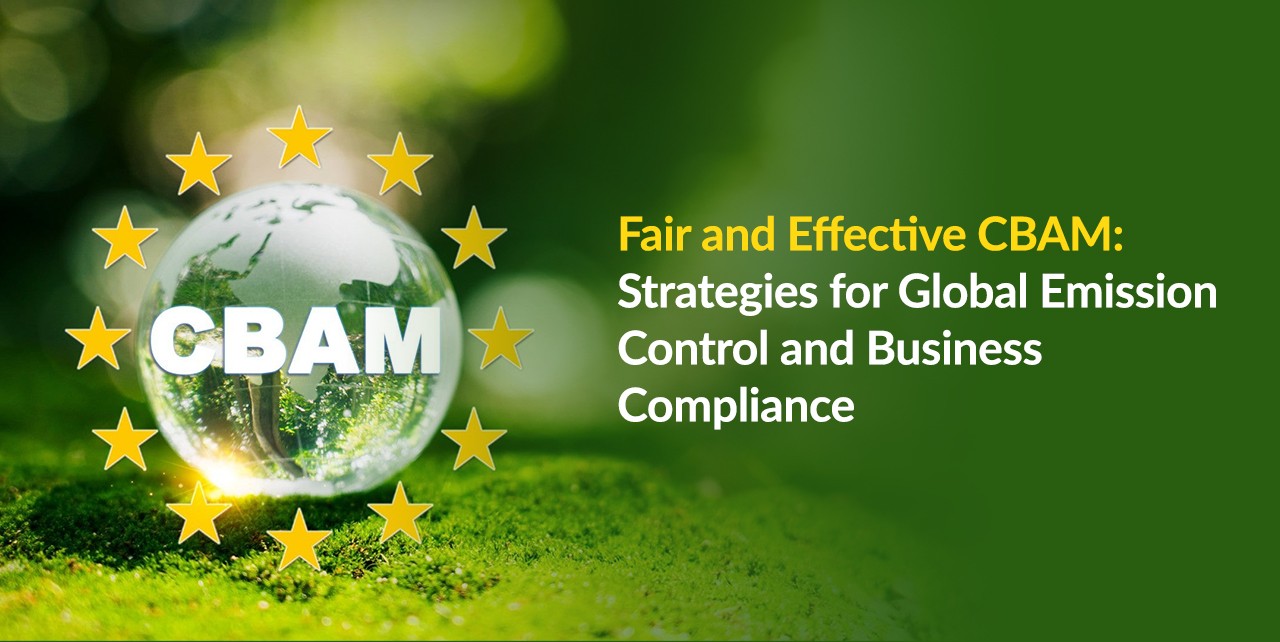Adopting a better model for fairness in the Carbon Border Adjustment Mechanism (CBAM) involves several strategic steps to ensure that the policy is equitable, effective, and supportive of global climate goals.
Key Considerations and Approaches to Improve Fairness
1. Differentiated Responsibilities
– Developing vs. Developed Countries: Recognize the principle of common but differentiated responsibilities. Developing countries should be given flexibility and support to comply with CBAM without bearing the same burden as developed nations.
– Economic Capacity: Assess and adjust the CBAM based on the economic capacity of countries, ensuring that less economically developed nations are not disproportionately affected.
2. Revenue Recycling and Support
– Revenue Use: Use revenues generated from CBAM to support climate action in developing countries. This can help in funding renewable energy projects, technology transfers, and capacity-building initiatives.
– Domestic Adjustments: Implement measures to mitigate any regressive impacts within the implementing country, such as supporting vulnerable industries and communities.
3. Transparency and Consultation
– Stakeholder Engagement: Involve a wide range of stakeholders, including developing countries, industry representatives, and civil society, in the design and implementation of CBAM.
– Clear Methodologies: Ensure transparency in the calculation of carbon content and adjustment costs, with methodologies that are publicly accessible and scientifically robust.
4. Incentives for Green Technologies
– Innovation Support: Provide incentives for countries and companies to adopt greener technologies and reduce their carbon footprints. This can include subsidies, tax breaks, and technical assistance.
– Green Certification: Implement a certification system for products that meet specific environmental standards, giving them preferential treatment under CBAM.
5. Gradual Implementation
– Phased Approach: Start with a pilot phase or a gradual rollout to allow time for adjustment and to address any unforeseen challenges.
– Flexibility: Include provisions for periodic reviews and adjustments based on economic, environmental, and social impacts.
6. Alignment with International Trade Rules
– WTO Compliance: Ensure that CBAM is designed to be consistent with World Trade Organization (WTO) rules to avoid trade disputes and to gain wider acceptance.
– Multilateral Cooperation: Work towards multilateral agreements on carbon pricing and border adjustments to create a more harmonized global approach.
7. Social Considerations
– Equity Impact Assessments: Conduct equity impact assessments to understand how CBAM affects different populations and adjust policies to mitigate adverse effects on low-income and vulnerable groups.
– Job Transition Programs: Support programs for workers transitioning from carbon-intensive industries to greener sectors to ensure fair and just transitions.
8. Monitoring and Enforcement
– Robust Monitoring: Establish robust monitoring systems to ensure compliance and to prevent carbon leakage.
– Fair Enforcement: Implement fair and consistent enforcement mechanisms with clear guidelines and dispute resolution processes.
The CBAM Conundrum
The NLMK Group, an international steel producer employing over 52,000 people worldwide, operates manufacturing plants in Belgium, Denmark, France, and Italy. Their business model includes producing semi-finished steel products (slabs) in Russia, then shipping these slabs to European sites for further transformation into finished products.
Recent assessments using European methodology indicate that NLMK’s CO2 footprint is lower than the average of EU integrated producers and aligns with the EU best-in-class benchmarks. Ensuring fairness in the Carbon Border Adjustment Mechanism (CBAM) is crucial for NLMK, given its global supply chain and CO2 footprint achievements.
A Superior Policy Option for Fairness
To explore fairness in the CBAM, NLMK consulted experts from MIT and the University of Cambridge. They proposed an Individual Adjustment Mechanism (IAM) within the CBAM, offering significant economic, climate, and legal benefits. This mechanism would allow non-EU producers to demonstrate their actual carbon intensity relative to an established default value.
The current CBAM design may consider a ‘default’ or benchmark value to determine the carbon intensity of imports. However, a ‘one size fits all’ approach could contradict the main objective of the CBAM—fighting climate change by avoiding carbon leakage. Such an approach could result in cleaner producers being charged the same amount as higher-carbon producers, potentially violating the principle that ‘the polluter should pay.’ This method also risks violating international trade laws and increasing the chance of international retaliation.
How the IAM Would Work
The IAM would enable producers to showcase their actual carbon intensity compared to the default value, offering a voluntary mechanism for EU importers. This would allow foreign producers to be recognized for their decarbonization efforts compared to more carbon-intensive importers or local producers. Importers would need to provide documentation on the actual emissions associated with the production of imported goods, following the established monitoring, verification, and reporting (MRV) process used for domestic goods under the EU ETS.
Benefits of the IAM and Next Steps
– Economic Incentives: It provides a stronger incentive for foreign producers to reduce their carbon intensity, enhancing the CBAM’s effectiveness in reducing global CO2 emissions.
– WTO Compatibility: The IAM improves the likelihood of CBAM being WTO-compatible and non-discriminatory.
– Level Playing Field: It levels the playing field for low-carbon products against CO2-intensive goods, promoting the EU’s environmental goals and driving changes in consumption patterns.
As the European Commission analyzes responses to the CBAM consultation, these two options will be at the forefront on how the companies should adopt the policies. To avoid unintended effects, such as increased production costs for downstream sectors, there should be proper priorities in place such as targeting a carbon charge at the consumption level. If the final decision is to implement an EU CBAM, incorporating an IAM will ensure it effectively combats global climate change and maintains WTO compatibility, positioning the EU as a global advocate for fairness.


